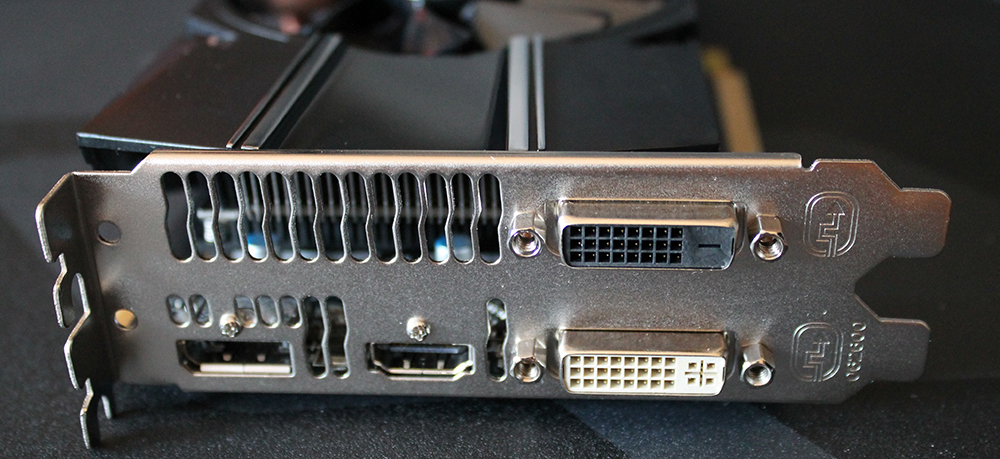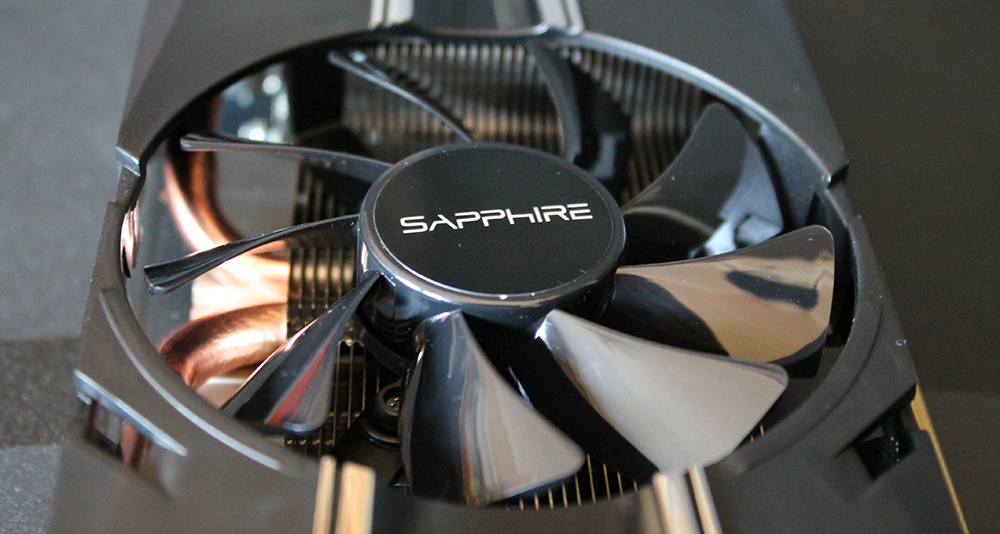Sapphire R7-260X Review
The Card
Now, let’s take a closer look at the card. Firstly the outputs.
On the Sapphire R7-260X you get a Display Port connection, a HDMI port, and two DVI connections. It’s worth noting that only the bottom one in this picture can be converted to VGA.
The cooling arrangement on the Sapphire R7-260X is by way of one large fan over a similarly large finned heat sink, this one features two large copper heat pipes that intersect the fins to transfer heat. Whilst generally quieter than the blower fans found on stock coolers, it does mean that some heat will escape back into your case.
Here you can see the large heat pipes a bit clearer as well as the shroud that covers it, which helps to direct airflow. You can also see the single six pin connector that the Sapphire R7 260X requires, it is a modest beast after all.
If we flip the card over, one thing will no doubt be glaringly obvious; the amount of blank PCB on the left. To be perfectly honest I am unsure as to why it’s there if it is unused, but it seems to be partly used as a way to channel air for the cooler.
Even with the additional space, the Sapphire R7-260X is a small card that I believe should not cause issues in most modern cases.
Now after all of that unboxing, let’s see how it performs.








